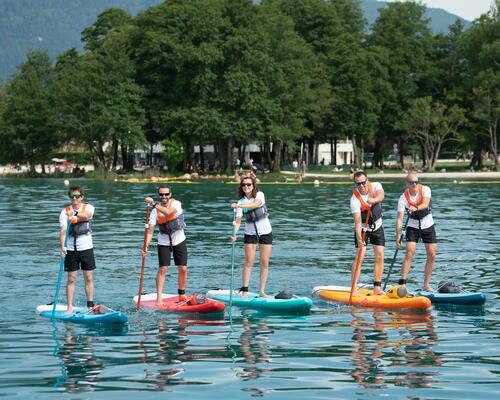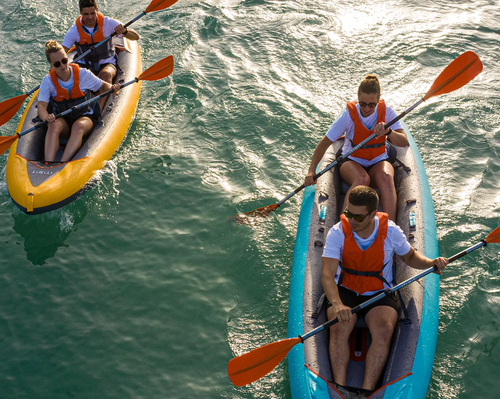Inflatable vs. Solid SUP
Choosing the perfect paddle board often comes down to deciding between an inflatable (iSUP) or a rigid board. Here’s a quick comparison to help you decide which might be right for you:
Portability: Inflatables are exceptional for travel. They can be deflated, rolled up, and easily transported in a backpack, whereas solid boards require a roof rack or a larger vehicle for transportation.
Storage: iSUP wins again; they take up little storage space and can put away in a closet, which is ideal for those with limited space. Solid boards need more room, like a garage or a dedicated storage rack.
Durability: Although solid boards can be more durable in the surf, high-quality inflatable boards are remarkably tough, able to withstand bumps against rocks and logs.
Performance: Advanced paddlers might prefer the performance of a solid board, especially for activities like racing or surfing, as they cut through the water with more precision.
Stability: For beginners, a wider board can offer more stability, and many inflatable boards provide this. However, for choppy water or heavier paddlers, a solid wide board might be more appropriate.
Cost: iSUP tends to be less expensive than their solid counterparts, making them a great entry-level option.
Remember, it’s important to consider your weight range and the type of water you'll be paddling in when choosing between an inflatable or solid SUP.








